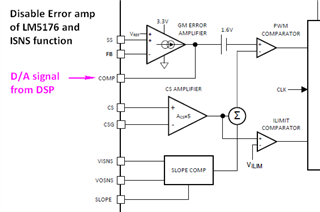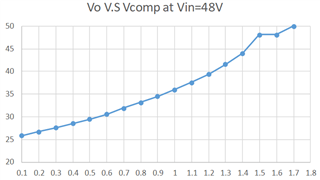Other Parts Discussed in Thread: LM5176, LM5170, LM5175
Dear Expert:
Base on some reasons, we will replace LM5170 by LM5176 for 3kw DC/DC converter. So far, it is 4phase with LM5170. (48V~30Vin, 48Vout)
Do you have any experience about 4 parallel LM5176?
I have read the application in TI web site. (Two parallel, SNVA792 and SNVA794).
We want to know whether LM5176 can be controlled by DSP in parallel.
1) Disable Error amp of LM5176.
2) Short ISNS function
3) Give D/A signal to the comp pin of each LM5176.
Is there any sign impact? Or we shall follow SNVA792 and SNVA794 method?
Thanks.
Aska



